Spider-view: Spider-Man: Fear Itself
A perfectly suitable graphic novel, Fear Itself is a familiar story for those seeking some comfort in the Spidey standard
—by Nathan on September 12, 2023—
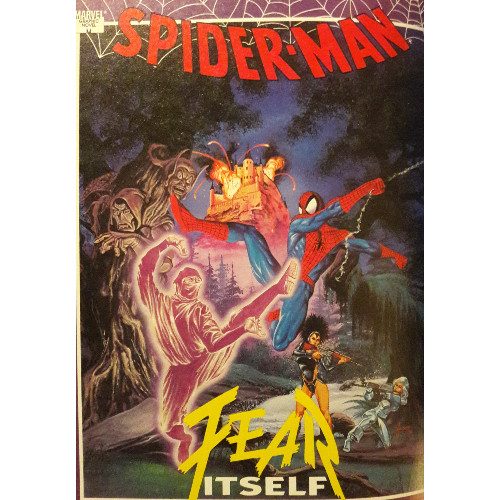
In his first inaugural address, delivered March 3 1933, President Franklin D. Roosevelt spoke the immortal words, "the only thing we have to fear is fear itself." He went to describe this fear as "nameless, unreasoning, unjustified terror." A powerfully declarative statement given to a nation gripped in the panic of a financial depression, the phrase has maintained its relevance over the decades, quoted ad nauseam and adapted for the titles of songs, TV show episodes…even comic books.
Despite its rallying, rousing roots, this February 1992 graphic novel could not be farther from the meaning in Roosevelt’s words delivered nearly 60 years earlier. "Fear" plays an important part in this global adventure, constructed by Gerry Conway, Stan Lee, and Ross Andru, but we’re not worrying about the economic ruin of an entire nation. No, we’re hewing a bit closer to a different fear Roosevelt himself would face shortly thereafter.
Yeah, we’re talking about Nazis.
Spider-Man: Fear Itself
Writers: Gerry Conway, Stan Lee
Penciler: Ross Andru
Inker: Mike Esposito
Colorist: Bob Sharen
Letterer: Rick Parker
Issues: Spider-Man: Fear Itself graphic novel
Publication Dates: February 1992
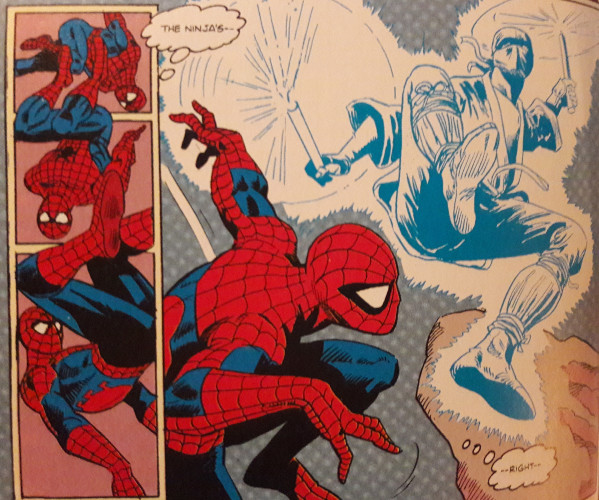
Three years after dictating Peter Parker and Mary Jane’s love story in a different graphic novel, Conway returns to the Web-Head, teamed with penciler Ross Andru and Spidey co-creator Stan “The Man” Lee (credited as "scripter," while Conway is given double billing as "scripter" and "plotter"). I’ve largely enjoyed Conway’s work, particularly his entertaining run of Spectacular Spider-Man issues, and within that subset, the admirable attempts he made at infusing the "Cosmic Spider-Man" arc with some form of cohesion. I don’t have much exposure to Andru, aside from a few random issues I’ve read, but he does fairly good work here, though artistic credit should also be given to Bob Sharen’s colors.
Fear Itself isn’t a whopper of a graphic novel, let me get that out of the way now, but it can pride itself on staying the course as a distinctly "Spider-Man" graphic novel. It reads like a Spidey graphic novel, looks like a Spidey graphic novel, and probably tastes like a Spidey graphic novel. Fear Itself is totally welcome fitting within that niche. It does not seek to elevate itself or the genre as a whole. And that’s important.
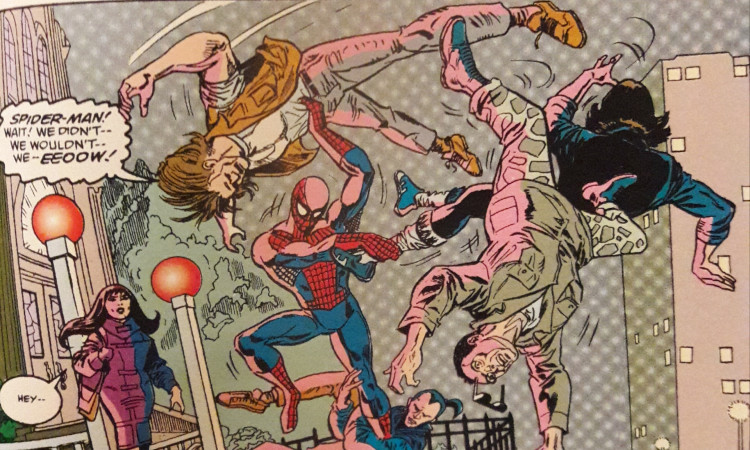
I’ve complained, somewhat liberally, on how Marvel’s line of high quality graphic novels, despite their unique format and (generally) higher art production, failed to stand out narratively. Oh, sure, Jim Starlin’s Death of Captain Marvel remains the pinnacle of the line, and Chris Claremont and Brent Anderson’s God Loves, Man Kills is a close second, but these high-end narratives quickly floundered. Avengers: Deathtrap: The Vault (also known as “Marvel Graphic Novel #68”) is a mouthful only a symbiote with a detachable jaw can swallow properly…and, yeah, it’s a fun story, but it’s indicative of the line’s declining quality. Some of the graphic novels I’ve reviewed, save for the stylized art direction, don’t feel superior or more impactful than your average issue published at the time.
The Spidey-centric graphic novels I've reviewed have, admirably, attempted to be different. You generally don’t expect to see Spidey facing grotesque monsters in a fantastic cloud-scape or traipsing through the idyllic hills of Scotland. Both Hooky and Spirits of the Earth, especially given the painterly styles of Bernie Wrightson and Charles Vess, respectively, certainly strove to be different than the common issues found on the racks.
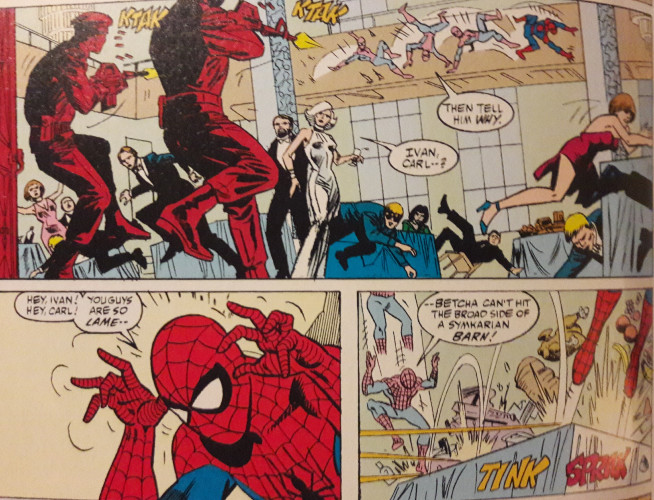
But Fear Itself, much like the Conway-penned Parallel Lives, feels more like a dyed-in-the-wool Spidey romp, and perhaps because the graphic novel line had dipped in quality by this point, I don’t mind walking away from a story that’s suitably entertaining without preening itself or forcing itself to feel exceptional.
Conway, Lee, and Andru teams our Webbed Wonder with old friend Silver Sable and sends them halfway around the world to confront a new menace…or, perhaps, an old menace with a new face. A mystery abounds as the narrative unfolds, resulting in a rather unexpected direction that’s not wholly welcome…the conclusion feels somewhat forced, a little hokey and out-there. You can see the seeds sown by Conway and Lee, so the ending isn’t completely out of the blue, but the underlying concept is so outlandish you begin to think the writers intentionally diverted your attention to keep their twist under wraps. You feel a little tricked rather than satisfied.

Fortunately, the surrounding story is more satisfying. Action sequences abound, whether it’s Spider-Man breaking into the Symkarian embassy, an extended sequence where Spidey faces an invisible ninja, or Sable pulling off her best Bond, James Bond impression to escape confinement. Andru toys with movement across two action sequences nicely, giving the illusion of speed across small spurts of time. There’s nothing here you can call ingenious, but the action unravels well enough to maintain your attention.
Conway and Lee carefully interject bits of Spidey history where appropriate, and though none of it is overwhelmingly essential to the plot, it’s nice to be reminded of details. We get appearances from Mary Jane, J Jonah Jameson, Aunt May, and Harry Osborn. There’s nothing much to write on any of these characters, save Conway and Lee playing them each up to type. Jonah chomps his cigar and yells at people, Harry seeks the help of a friend, Aunt May makes food. They’re treated like standard Spidey supporting cast members–what else is there to expect?
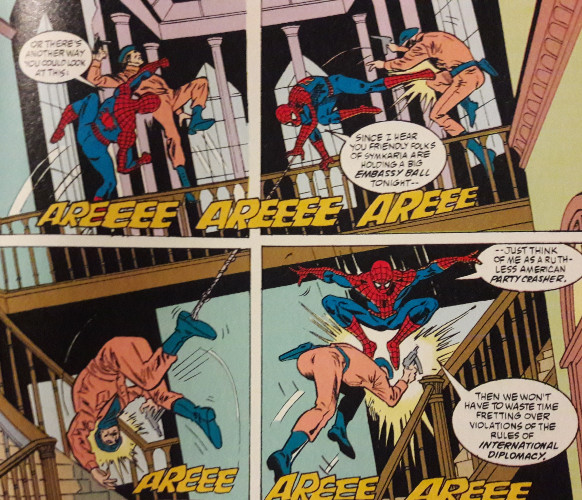
The "fear" aspect is treated kindaaaa as a theme in the piece, primarily rearing its head closer to the end as Spidey grapples with a medicinally-induced bout of terror. As he imagines old foes (and even a former costume), Spidey temporarily wrestles with some of his inner demons. Much like with his characters, Conway and Lee aren't delivering any amazing insight into our spider-powered protagonist. We’ve seen this a hundred times, Spidey tortured by guilt, fear, or inadequacy or haunted by the ghosts of Uncle Ben, Norman Osborn, Ned Leeds, or Gwen Stacy. Much like the rest of the graphic novel, this fear-induced sequence is par for the course.
Fear Itself feels standard. And that’s not really disappointing. Make sure to temper your expectations. If you enter the graphic novel thinking you’ll devour the same fantastic narratives we’ve seen in other stories, you’ll be disappointed. Spidey travels to another country, but he’s not directed by an author with a love for the country and culture. Spidey grapples with fearsome foes, but he’s not battling nightmares from another dimension. It’s Spidey (and Silver Sable) against some doggone Nazis, with some historical references (to both real world history and Marvel mythology) and characters tossed into the mix to remind you this is a Spidey mag. If that’s your cup of tea, go ahead, take a sip. If not, pour it out and look for something else in the cupboards…I’m sure you’ll find a more agreeably tasting tale.